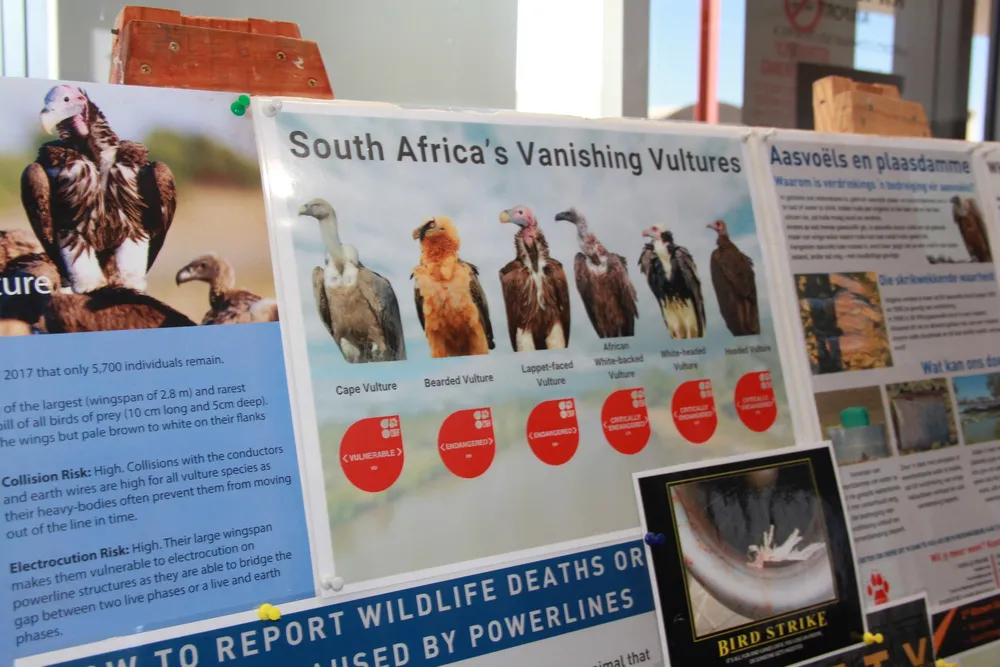Ecologist urges urgent action to protect Kimberley’s endangered vultures

Ecologist Christine Kraft highlighted the importance of preserving critically endangered vultures. Picture: Sandi Kwon Hoo
AN ECOLOGIST from the Northern Cape Department of Agriculture, Environmental Affairs, Rural Development and Land Reform, Christine Kraft, has called for drastic measures to be taken to protect dwindling vulture populations that are standing on the brink of extinction.
There are estimated to be around 136 vulture nests in areas surrounding the Kimberley Airport, which are home to the Cape vulture, white-backed vulture and lappet-faced vulture.
As part of International Vulture Awareness Month at the Kimberley Airport this week, Kraft highlighted that the biggest threats to vultures include poisoning, collisions or electrocution with power infrastructure, habitat loss, harvesting for traditional medicine and drowning in farm dams.
“Poisoning occurs due to them ingesting lead fragments from bullets found in carcasses or eating poisoned carcasses that are deliberately placed by elephant and rhino poachers to prevent vultures from alerting conservation authorities of their location. A single poisoning event can wipe out an entire vulture population,” Kraft explained.
She added that vultures are targeted for muti, where their eyes and brains are harvested.
“Vultures are listed as critically endangered as they only produce one chick per year. As scavengers, vultures eat decaying carcasses and thereby prevent the spread of diseases to wildlife, livestock and humans.”

Kraft added that vultures weighed up to 12 kilograms and could fly up to 1,200 kilometres over 24 hours at high speeds.
“A vulture that is sucked into an aircraft engine can result in loss of lives as they are unable to swerve out of the way of flying objects. These birds are also very inquisitive creatures.”
She noted that vultures often feed around the same time flights are scheduled for take-off, increasing the risk of collisions.

